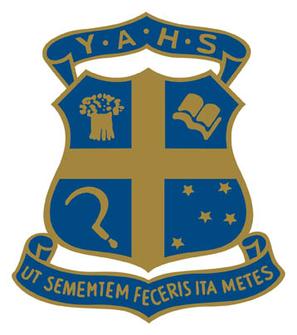
The Homestead Acts were several laws in the United States by which an applicant could acquire ownership of government land or the public domain, typically called a homestead. In all, more than 160 million acres of public land, or nearly 10 percent of the total area of the United States, was given away free to 1.6 million homesteaders; most of the homesteads were west of the Mississippi River. These acts were the first sovereign decisions of post-war North–South capitalist cooperation in the United States.
Lara is a town in Victoria, 18 km north-east of the Geelong CBD, inland from the Princes Freeway to Melbourne. Its population at the 2021 census was 19,014.

Norlane is a northern suburb of Geelong, in Victoria, Australia. Norlane is bordered in the south by Cowies Creek, in the north by Cox Road, in the west by Thompson Road and in the east by Station Street. It is about 7 km from the Geelong central business district and approximately 70 km from the state capital, Melbourne. It is about one kilometre from the shore of Corio Bay. At the 2016 census, Norlane had a population of 8,306.

The Bellarine Peninsula is a peninsula located south-west of Melbourne in Victoria, Australia, surrounded by Port Phillip, Corio Bay and Bass Strait. The peninsula, together with the Mornington Peninsula, separates Port Phillip Bay from Bass Strait. The peninsula itself was originally occupied by Indigenous Australian clans of the Wadawurrung nation, prior to European settlement in the early 19th century. Early European settlements were initially centred on wheat and grain agriculture, before the area became a popular tourist destination with most visitors arriving by paddle steamer on Port Phillip in the late 19th century.

Richard JoshuaReynolds was an American businessman and founder of the R. J. Reynolds Tobacco Company.

The Yanco Agricultural High School, abbreviated as YAHS, is a government-funded co-educational academically selective and specialist secondary boarding school, located in Yanco in the Leeton Shire local government area, in the Riverina region of New South Wales, Australia.
Wooleen Station is a pastoral lease that was previously operated as a sheep station and currently runs cattle. The station was established in 1886 in the Murchison region of Western Australia that is bisected by the Murchison River. The station is situated approximately 680 kilometres (423 mi) north of Perth in the Shire of Murchison.
Croydon Station, often spelt as Croyden Station, is a pastoral lease and sheep station.
Boolathana Station is a pastoral lease currently operating as a cattle station that once operated as a sheep station in Western Australia.
Charnley River–Artesian Range Wildlife Sanctuary is a protected area covering about 3,000 square kilometres (1,200 sq mi) in the Kimberley region of Western Australia. It is situated about 205 kilometres (127 mi) east of Derby and 287 kilometres (178 mi) north west of Halls Creek, and is accessed via the Gibb River Road. It is named after the Charnley River that flows through the property.
Gabyon Station, commonly referred to as Gabyon, is a pastoral lease that operates as a sheep station in Western Australia.
Karbar or Karbar Station is a pastoral lease that currently operates as a cattle station and has previously operated as a sheep station.

Westbrook Homestead is a heritage-listed homestead at Coupers Road, Westbrook, Toowoomba Region, Queensland, Australia. It was built from 1864 to 1867. It was added to the Queensland Heritage Register on 21 October 1992.

Bushy Park Homestead is an Edwardian-era homestead located in the Bushy Park forest sanctuary, 8 km (5.0 mi) from Kai Iwi, in the Manawatū-Whanganui region of New Zealand. The homestead is registered as a Category I heritage building by Heritage New Zealand.

Andado Station is a pastoral lease that operates as a cattle station in the Alice Springs region of the Northern Territory. On the traditional lands of the Arrernte people before European settlement, the first pastoral lease was granted in 1880. The station includes the Mac Clark Conservation Reserve, created to help preserve the rare Acacia peuce tree.

Tiroran is hamlet on the Isle of Mull in Argyll and Bute, Scotland.
Hargraves House, Noraville is a heritage-listed house at 3 Elizabeth Drive, Noraville in the Central Coast local government area of New South Wales, Australia. It was designed by Edward Hammond Hargraves and built from 1856 to 1859 by Mr Fletcher. It is also known as Hargraves House and Norahville. It was added to the New South Wales State Heritage Register on 2 April 1999.

Tocal Homestead is a heritage-listed homestead at Tocal Road, Paterson, Dungog Shire, New South Wales, Australia. The original 1845 homestead was designed by William Moir, while an 1867 barn was designed by Edmund Blacket. The property is owned by the C. B. Alexander Foundation. It was added to the New South Wales State Heritage Register on 2 April 1999. The Tocal College complex, built on the former homestead grounds from the 1960s, is separately heritage-listed.

Mamre is a heritage-listed former farm homestead complex, grain cropping, pastoral property and wool production and now residence, community facility, market gardening and nursery production located at Mamre Road in the western Sydney suburb of Orchard Hills in the City of Penrith local government area of New South Wales, Australia. It was built from 1822 to 1832. The property is owned by the New South Wales Department of Planning and Infrastructure. It was added to the New South Wales State Heritage Register on 2 April 1999.

Hamelin Station or Hamelin Station Reserve is a tourist site and conservation reserve, that was a pastoral lease, occupying an area of 202,000 hectares near the Shark Bay World Heritage Area in Western Australia. It was formerly a sheep station running merino sheep. It is famous for its free flowing artesian bore from the Birdrong Formation in the Carnarvon Artesian Basin, near the homestead, which has created an artificial lake that has become a haven for bird life.












